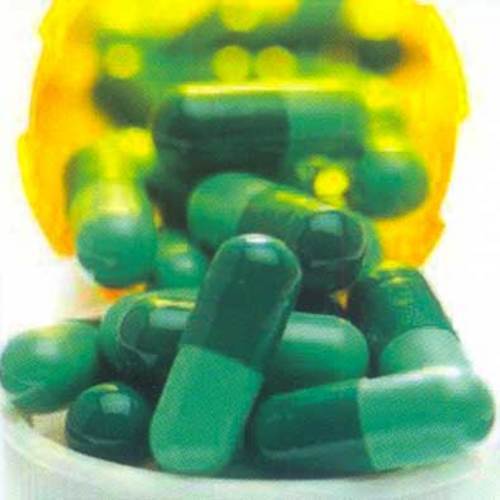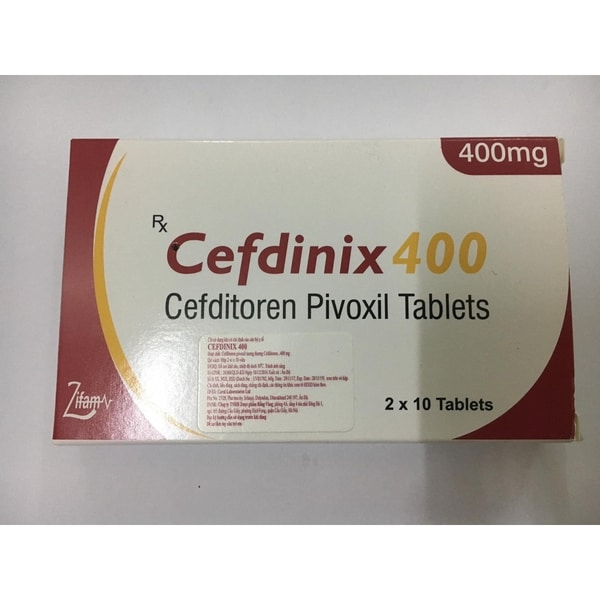What Is The Dosage Of Cefdinir Vs Amoxicillin
Cefdinir
- Cefdinir is taken once or twice daily, depending on the type and severity of the infection.
- The capsules or suspension can be taken with or without food.
- Patients with advanced kidney disease may need to take lower doses to prevent accumulation of cefdinir since it is eliminated from the body by the kidneys.
- For adult infections the usual dose is 300 mg every 12 hours or 600 mg per day for 5-10 days depending on the nature and severity of the infection.
- The recommended dose for children 6 months to 12 years of age is 7 mg/kg every 12 hours or 14 mg/kg per day for 5-10 days depending on the type of infection.
- For most infections, once daily dosing is as effective as twice daily dosing, although once daily dosing has not been evaluated for the treatment of skin infections or pneumonia.
Amoxicillin
- For most infections in adults the dose of amoxicillin is 250 mg every 8 hours, 500 mg every 8 hours, 500 mg every 12 hours or 875 mg every 12 hours, depending on the type and severity of infection.
- For the treatment of adults with gonorrhea, the dose is 3 g given as one dose.
- For most infections, children older than 3 months but less than 40 kg are treated with 25 or 45 mg/kg/day in divided doses every 12 hours or 20 or 40 mg/kg/day with one-third of the daily dose given every 8 hours depending on the type and severity of the infection.
- Amoxicillin can be taken with or without food.
Can I Use Cefdinir Or Amoxicillin With Alcohol
Alcohol does not directly interact with cefdinir or amoxicillin. However, it is not generally recommended to drink alcohol with antibiotics. Consuming excessive amounts of alcohol can increase the risk of adverse side effects like nausea and vomiting. Alcohol can also weaken the immune system and make it harder for the body to fight infections.
Is Cefdinir Or Amoxicillin More Effective
Cefdinir is effective against infections caused by gram-positive bacteria including Staphylococcus aureus, Streptococcus pneumoniae , and Streptococcus pyogenes. Cefdinir is also effective against gram-negative bacteria such as Haemophilus influenzae, Haemophilus parainfluenzae, and Moraxella catarrhalis.
Amoxicillin is effective against infections caused by gram-positive bacteria such as Streptococcus and Staphylococcus species. Amoxicillin is also active against gram-negative bacteria including Haemophilus influenzae, Escherichia coli, Helicobacter pylori, and Neisseria gonorrhoeae.
Don’t Miss: Will Mucinex Help With Sinus Congestion
How To Treat A Sinus Infection Without Antibiotics
Before you consider antibiotics, a sinus infection can be treated without leaving at home. Some of the home remedies to treat a sinus infection without antibiotics include:
Rated For Otitis Media Report

Thank goodness I didn’t go by the negative comments posted on here! It was prescribed for ear infection and sinusitis. Noticeable difference in pain within 12 hours. Had some irritation, in the private area, but not too bad. Took it with food and plenty of water and didn’t have stomach upset. If anything, had a bit of constipation. Took the entire dosage for the prescribed 10 days.
Recommended Reading: Prescription Nose Spray For Sinus Infection
Common Side Effects Of Sinus Medicines
All medicines have some side effects or the other. Depending on the type of medicine consumed for sinusitis infection, the side effects can vary.
Some of the side effects that people experience after consuming corticosteroids for sinus infections such as dizziness, nausea, indigestion, increased appetite, weight gain, stomach irritation, vision change, irregular periods, mood swings, weakness or disturbed sleeping patterns.
After taking decongestants, some side-effects that people experience are palpitations, nervousness, continuous irritation, difficulty in urinating, low appetite and nervousness.
People who have consumed antihistamines report side effects such as drowsiness, constipation, dry mouth, nervousness, etc.
Common side effects of antibiotics are nausea, vomiting, diarrhea, rash, hives or lightheadedness.
Why Is This Medication Prescribed
Cefdinir is used to treat certain infections caused by bacteria such as bronchitis pneumonia and infections of the skin, ears, sinuses, throat, and tonsils.. Cefdinir is in a class of medications called cephalosporin antibiotics. It works by killing bacteria.
Antibiotics such as cefdinir will not work for colds, flu, or other viral infections. Using antibiotics when they are not needed increases your risk of getting an infection later that resists antibiotic treatment.
Also Check: Ny Allergy And Sinus Murray Hill
Cefdinir Vs Amoxicillin: Differences Similarities And Which Is Better For You
Drug overview & main differences | Conditions treated | Efficacy | Insurance coverage and cost comparison | Side effects | Drug interactions | Warnings | FAQ
Cefdinir and amoxicillin are two antibiotics used to treat bacterial infections. Both drugs are part of a group of antibiotics called beta-lactams. They can treat a range of different infections such as respiratory tract infections, ear infections, and skin infections.
Like most beta-lactam antibiotics, cefdinir and amoxicillin work by inhibiting a bacterias ability to maintain its cell wall. By attacking this process, these antibiotics are able to break down the bacterias primary defense and means of reproduction.
Although they work in similar ways, cefdinir and amoxicillin are part of different subclasses of beta-lactam antibiotics. They also vary in how theyre used and which bacteria theyre most effective against.
Clinical Microbiological And Safety Assessments
Each patient was assessed at admission and on study days 1216, 1721 and 2842. The test-of-cure visit for each regimen was conducted 711 days after patients had stopped taking study medication. A constant time interval between completion of study medication and assessment would allow equal intervals for suppressed clinical symptoms and cultures to reappear in the two groups. Thus the TOC for those patients randomized to cefdinir was on study days 1216 and that for patients randomized to cefprozil was on study days 1721. The long-term follow-up visit , conducted to examine long-term clinical and microbiological outcomes, was not considered as crucial as the TOC and, hence, was conducted on study days 2842 for both regimens.
Recommended Reading: How To Make Sinus Rinse
Is Cefdinir A Powerful Antibiotic
Cefdinir and amoxicillin are most effective when targeting susceptible bacteria. If used improperly, bacteria can develop resistance to antibiotics and cause a more serious infection.
Why wont my sinus infection go away with antibiotics?
If your sinus infection wont go away or keeps coming back, it may be time to see an ear, nose, and throat specialist. An ENT treats conditions of the ear, nose, throat, head, face and neck. It may be time to consult an ENT if: You have taken several courses of antibiotics without success.
Are Cefdinir And Amoxicillin Safe To Take While Pregnant Or Breastfeeding
Cefdinir
- There are no adequate studies of cefdinir in pregnant women however, studies in animals suggest no important effects on the fetus.
- Cefdinir is not secreted in human milk.
Amoxicillin
- Penicillins are generally considered safe for use by pregnant women who are not allergic to penicillin.
- Small amounts of amoxicillin may be excreted in breast milk and may cause diarrhea or allergic responses in nursing infants. Amoxicillin is generally considered safe to use while breastfeeding. Amoxicillin is used to treat infections in the newborn.
Also Check: Nasal Spray For Sinus Cold
What Should I Avoid While Taking Cefdinir
Avoid using antacids or mineral supplements that contain aluminum, magnesium, or iron within 2 hours before or after taking cefdinir. Antacids or iron can make it harder for your body to absorb cefdinir. This does not include baby formula fortified with iron.
Antibiotic medicines can cause diarrhea, which may be a sign of a new infection. If you have diarrhea that is watery or bloody, call your doctor before using anti-diarrhea medicine.
Before Taking This Medicine

You should not take this medicine if you are allergic to cefdinir or any other cephalosporin antibiotic .
Tell your doctor if you have ever had:
-
kidney disease
-
intestinal problems, such as colitis or
-
an allergy to any drugs .
Cefdinir liquid contains sucrose. Talk to your doctor before using this form of cefdinir if you have diabetes.
Tell your doctor if you are pregnant or breastfeeding.
You May Like: The Best Over The Counter Sinus Medication
How And When To Take It
Its important to take prednisolone as your doctor has advised.
The usual dose varies between 5mg and 60mg daily 1ml of liquid prednisolone is usually equal to 10mg.
Unless your doctor or pharmacist gives you different instructions, its best to take prednisolone as a single dose once a day, straight after breakfast. For example, if your dose is 40mg daily, your doctor may tell you to take 8 tablets all at the same time.
Take prednisolone with breakfast so it doesnt upset your stomach. Taking prednisolone in the morning also means its less likely to affect your sleep.
If your prednisolone tablets are labelled as enteric coated or gastro resistant, you can take these with or without food but make sure to swallow them whole. Do not take indigestion medicines 2 hours before or after taking enteric coated or gastro resistant tablets.
Sometimes, you may be advised to take prednisolone on alternate days only.
What Are Steroid Nasal Sprays
A steroid nasal spray is a solution containing a medicine called a corticosteroid or steroid. The solution comes in a small bottle with an elongated nozzle that is sprayed into the nostrils. Steroid nasal sprays are considered very safe to use and deemed effective at treating the symptoms of sinus problems.
You May Like: Advil Cold And Sinus Directions For Use
Also Check: Does A Sinus Infection Smell Bad
How Many Hours Does It Take For Prednisone To Work
First, since Im a pharmacist, Im going to cover the boring part about the science of the drug itself. Then Ill answer the more exciting partprobably the real question you havein more detail at the end.
Prednisone is absorbed once you swallow it in an hour to two hours. Thats when it enters your bloodstream when its kicked in.
Prednisone Half-life
Prednisones half-life is three to four hours. So the prednisone molecule is mostly out of your system within a day, for most people at least. It all depends.
That fancy-schmancy pharmacology factoid doesnt really answer your question, though, does it?
You might still be wondering, But when is prednisone going to actually do its job? When is prednisone going to work for the reason Im taking it?
Right?
You May Like: What Is The Best Otc Sinus Allergy Medicine
What Are The Best Antibiotics For Sinus Infection Do Doctors Prescribe For You
There are many antibiotics that your doctor or physician may prescribe to help treat your sinus infection. Some of these may even be familiar to you.
These antibiotics are effective in treating sinus infection, however, these drugs do carry side effects. You should only be taken according to what your doctor or physician has prescribed. Always follow their instructions to achieve the best results.
You May Like: Can You Take Advil Cold And Sinus With Allergy Medicine
Tips For Good Reviews
- Only rate drugs or treatments you’ve tried.
- In your description, mention the brand, dose, and period of time that you used the drug or treatment.
- Please share your positive and negative experiences with the drug, and compare it with other treatments you have used.
- Do not include any personal information or links in your review.
Symptoms And Signs Of Sinusitis
Acute and chronic sinusitis cause similar symptoms and signs, including purulent rhinorrhea, pressure and pain in the face, nasal congestion and obstruction, hyposmia, halitosis, and productive cough . Often the pain is more severe in acute sinusitis. The area over the affected sinus may be tender, swollen, and erythematous.
-
Maxillary sinusitis causes pain in the maxillary area, toothache, and frontal headache.
-
Frontal sinusitis causes pain in the frontal area and frontal headache.
-
Ethmoid sinusitis causes pain behind and between the eyes, a frontal headache often described as splitting, periorbital cellulitis, and tearing.
-
Sphenoid sinusitis causes less well localized pain referred to the frontal or occipital area.
Malaise may be present. Fever and chills suggest an extension of the infection beyond the sinuses.
The nasal mucous membrane is red and turgescent yellow or green purulent rhinorrhea may be present. Seropurulent or mucopurulent exudate may be seen in the middle meatus with maxillary, anterior ethmoid, or frontal sinusitis and in the area medial to the middle turbinate with posterior ethmoid or sphenoid sinusitis.
Manifestations of complications include periorbital swelling and redness, proptosis, ophthalmoplegia, confusion or decreased level of consciousness, and severe headache.
Also Check: Best Allergy Medication For Sinus Headaches
Algorithm For Use Of Antibiotics In Acute Sinusitis
|
Adapted from Chow AW, Benninger MS, Brook I, et al: IDSA clinical practice guideline for acute bacterial rhinosinusitis in children and adults. Clinical Infectious Diseases 54 :10415 . |
In exacerbations of chronic sinusitis in children or adults, the same antibiotics are used, but treatment is given for 4 to 6 weeks. The sensitivities of pathogens isolated from the sinus exudate and the patients response to treatment guide subsequent therapy.
Sinusitis unresponsive to antibiotic therapy may require surgery to improve ventilation and drainage and to remove inspissated mucopurulent material, epithelial debris, and hypertrophic mucous membrane. These procedures usually are done intranasally with the aid of an endoscope. Chronic frontal sinusitis may be managed either with osteoplastic obliteration of the frontal sinuses or endoscopically in selected patients. The use of intraoperative computer-aided surgery to localize disease and prevent injury to surrounding contiguous structures has become common. Nasal obstruction that is contributing to poor drainage may also require surgery.
How Should I Take Cefdinir

Follow all directions on your prescription label and read all medicine guides or instruction sheets. Use the medicine exactly as directed.
Shake the oral suspension before you measure a dose. Use the dosing syringe provided, or use a medicine dose-measuring device .
You may take cefdinir with or without food.
Use cefdinir for the full prescribed length of time, even if your symptoms quickly improve. Skipping doses can increase your risk of infection that is resistant to medication. Cefdinir will not treat a viral infection such as the flu or a common cold.
Cefdinir can affect the results of certain medical tests. Tell any doctor who treats you that you are using cefdinir.
Store at room temperature away from moisture and heat. Throw away any unused cefdinir liquid that is older than 10 days.
Read Also: Can Sinus Infection Cause Acne
Research Into Antibiotics And Sinus Infections
The guidelines were triggered, in part, by studies finding that antibiotics may not make a difference. About 60% to 70% of people with sinus infections recover without antibiotics, according to the American Academy of Allergy, Asthma & Immunology.
In one study of symptom relief, patients given antibiotics generally did no better than patients not given antibiotics.
This study, published in the Journal of the American Medical Association, observed 240 patients with sinusitis. They were given one of four treatments: antibiotics alone, nasal steroid spray alone to reduce tissue swelling, both antibiotics and the spray, or no treatment.
Patients who got no treatment were as likely to get better than those who got the antibiotics. The nasal spray seemed to help people with less severe symptoms at the beginning of their sinus problem, and seemed to make those with more intense congestion worse.
The patients all had sinus symptoms that suggested a bacterial infection. Sinus problems are also caused by viruses, for which antibiotics definitely offer no help.
What Is Sinus Infection
Medically known as rhinosinusitis, Sinus infection or Sinusitis is an inflammation or swelling of the tissue lining the sinuses. Healthy sinuses are filled with air. But when they become blocked and filled with fluid, germs can grow and cause an infection. It occurs when your nasal cavities become infected, swollen, and inflamed. Sinusitis is usually caused by a virus and often persists even after other upper respiratory symptoms are gone. In some cases, bacteria, or rarely fungus, may cause a sinus infection.
Also Check: What Is The Best Remedy For Sinus Headache
Who Can And Cant Take Prednisolone
Prednisolone can be taken by adults and children.
Prednisolone isnt suitable for some people.
Tell your doctor before starting the medicine if you:
- have had an allergic reaction to prednisolone or any other medicine
- have an infection
- are trying to get pregnant, are already pregnant or you are breastfeeding
- have recently been in contact with someone with shingles, chickenpox or measles
- have recently had, or are about to have, any vaccinations
Make sure your doctor is aware if you have:
- had liver problems
What Should I Know About Storage And Disposal Of This Medication
Keep this medication in the container it came in, tightly closed, and out of reach of children. Store the capsules and suspension at room temperature and away from excess heat and moisture . Dispose of any unused suspension after 10 days.
Unneeded medications should be disposed of in special ways to ensure that pets, children, and other people cannot consume them. However, you should not flush this medication down the toilet. Instead, the best way to dispose of your medication is through a medicine take-back program. Talk to your pharmacist or contact your local garbage/recycling department to learn about take-back programs in your community. See the FDA’s Safe Disposal of Medicines website for more information if you do not have access to a take-back program.
It is important to keep all medication out of sight and reach of children as many containers are not child-resistant and young children can open them easily. To protect young children from poisoning, always lock safety caps and immediately place the medication in a safe location â one that is up and away and out of their sight and reach.
Recommended Reading: Common Cold Versus Sinus Infection